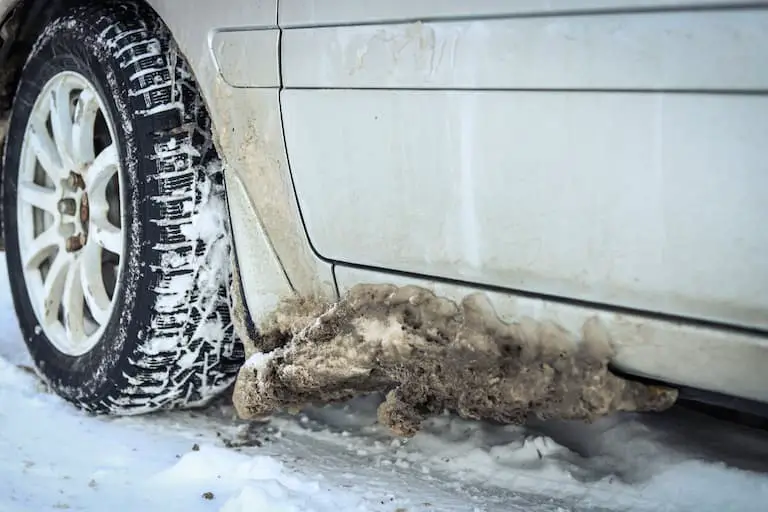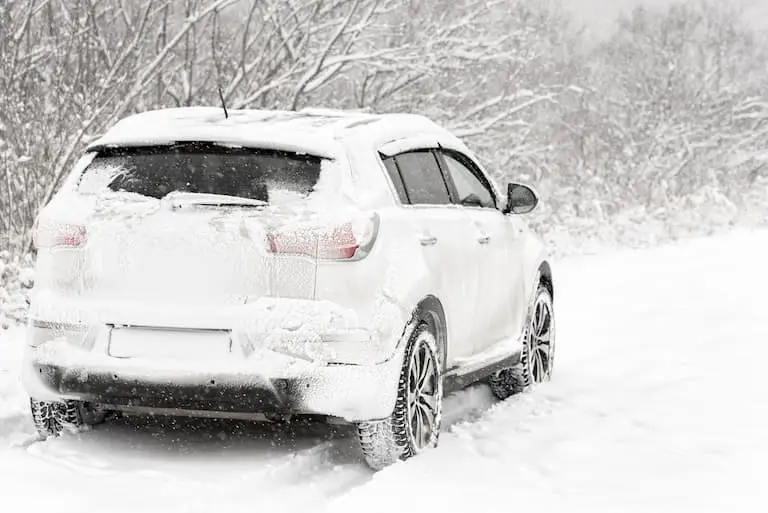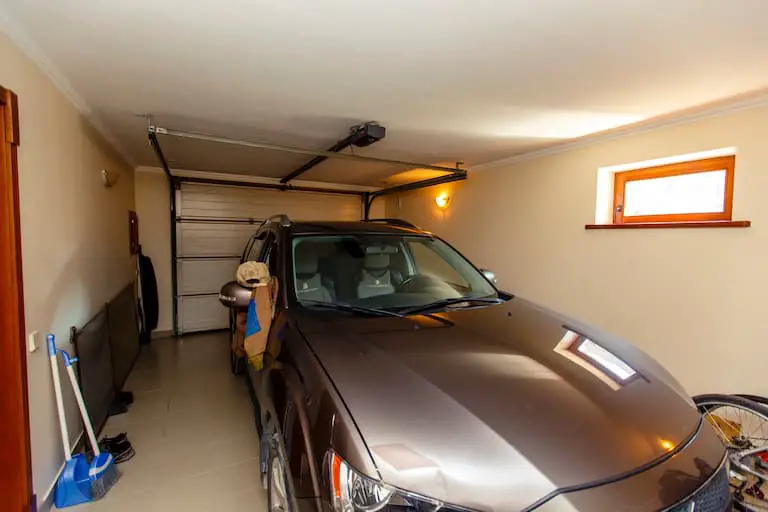As an Amazon Associate, we earn from qualifying purchases. We may also earn commissions if you purchase products from other retailers after clicking on a link from our site.
During the winter, it’s not just the cold weather that you will be worried about. If you have your car parked outside or are constantly driving in the snow, you could be worried about the snow damaging the bottom of your car. But does snow damage the bottom of your car?
Snow doesn’t damage the bottom of your car on its own. However, the salt used to melt the snow on the roads can cause some significant damage to the bottom of your car. Large lumps of ice on the road can also cause damage to the exhaust system of your car.
Read on to understand whether snow is the enemy to the bottom of your car or if you need to be careful about other dangers in the winter.

What Causes Damage to the Bottom of Your Car in the Snow?
The salt used to clear roadways during the winter causes the most significant damage to the bottom of your car in the snow. Road workers use the salt to melt away the snow and give your car a firmer grip on the road when you drive in the snow.
However, the salt can cause rust on the metallic parts of your car and cause wear and tear, as well as the rust that damages your car’s parts. If this salt builds up on your car for a long time, it causes corrosion.
The salt can accumulate and corrode anything unprotected at the bottom of your car. It can also steep into your electric connectors and cause more damage to your vehicle.
How Snow Affects Your Car
When it snows, the snow gathers around your car and on top of it. It also gathers under the car and sometimes solidifies into ice.
However, the ice will only latch on the heels of your car and can’t cause any significant damage.
If you keep driving your car during the winter, the heat from the engine and the exhaust system will melt off the ice or snow and vaporize it.
The only time is that ice or snow can cause significant damage to the bottom parts of your car is if you drive into a big pile of snow at high speed. This can damage the exhaust system, brake or fuel lines, and other car parts.
However, the damage will only occur if you keep hitting those large lumps on the road.
If your car has a lower suspension, it is more susceptible to damage from the big lumps of snow and ice on the road when you drive. You can raise your car’s suspension and save yourself trips to the mechanic in the winter.

How To Protect Your Car’s Bottom From Damage in the Winter
Your car’s susceptibility to damage in the winter doesn’t mean that you should not drive whenever you need to. It only means that you should take extra care when driving and treat your car better to avert any damage caused by the snow, ice, or salt.
Here are different ways you can employ to protect your car’s bottom from damage in the winter.
1. Wash the Car’s Underside Well
Whether you wash your car yourself at home or take it to the car wash, pay more attention to the bottom areas than you would in the summer.
Ask the cleaning company to clean your car’s bottom areas with soap and water to remove the salt. However, always have professionals attend to your car to avoid damaging your engine or exhaust systems when washing the car.
A thorough clean-up of the bottom of your car will remove the salt and reduce the chances of rust on your car’s metallic parts. It also helps remove any debris that may be stuck under the car.
2. Don’t Drive Through Deep Snow
If the roads are covered in deep layers of snow, drive on the low layered parts and avoid the deep snow.
You don’t know what could be covered in those layers and how damaging it could be to the bottom of your car. Sometimes snow is a perfect color for huge pieces of debris such as tree stumps which could cause significant damage if they hit your car.
The big piles of snow could also be covering solidified ice which can cause physical damage to your car parts if you hit them at high speed.
3. Park in the Garage
Park your car in the garage, and protect it from the falling snow and the build-up of ice at the bottom of your car. Parking your car by the roadside leaves it susceptible to a snow cover that can be big enough to cover your car from visibility, and it could get hit by other cars.
If you leave your car outside, you’ll be increasing its chances of gathering salt, which will then rust off the bottom metallic parts of your car.
However, you have more control over the amount of snow or salt your car comes into contact with in the garage.

4. Use Oil Based Underspray or Wax
If you don’t have a covered garage to park your car or are consistently driving in the snow, you must keep your bottom metallic parts protected. A quality oil-based spray or wax will stop the salt from clinging to your car’s parts, and you’ll protect your car from the destructive rust that damages its parts in the snow.
Conclusion
All though snow doesn’t have any significant impact on the bottom part of your car, it can harbor damaging debris and salt that can damage your car parts.
The salt rusts and corrodes your car parts, leaving them susceptible to wear and tear.
However, you can protect the bottom parts of your car by washing it that early every time you drive into the snow and avoiding the deep part of snow on the road. You can also use a good oil-based under spray or works to keep the salt off the bottom metallic parts of your car.
